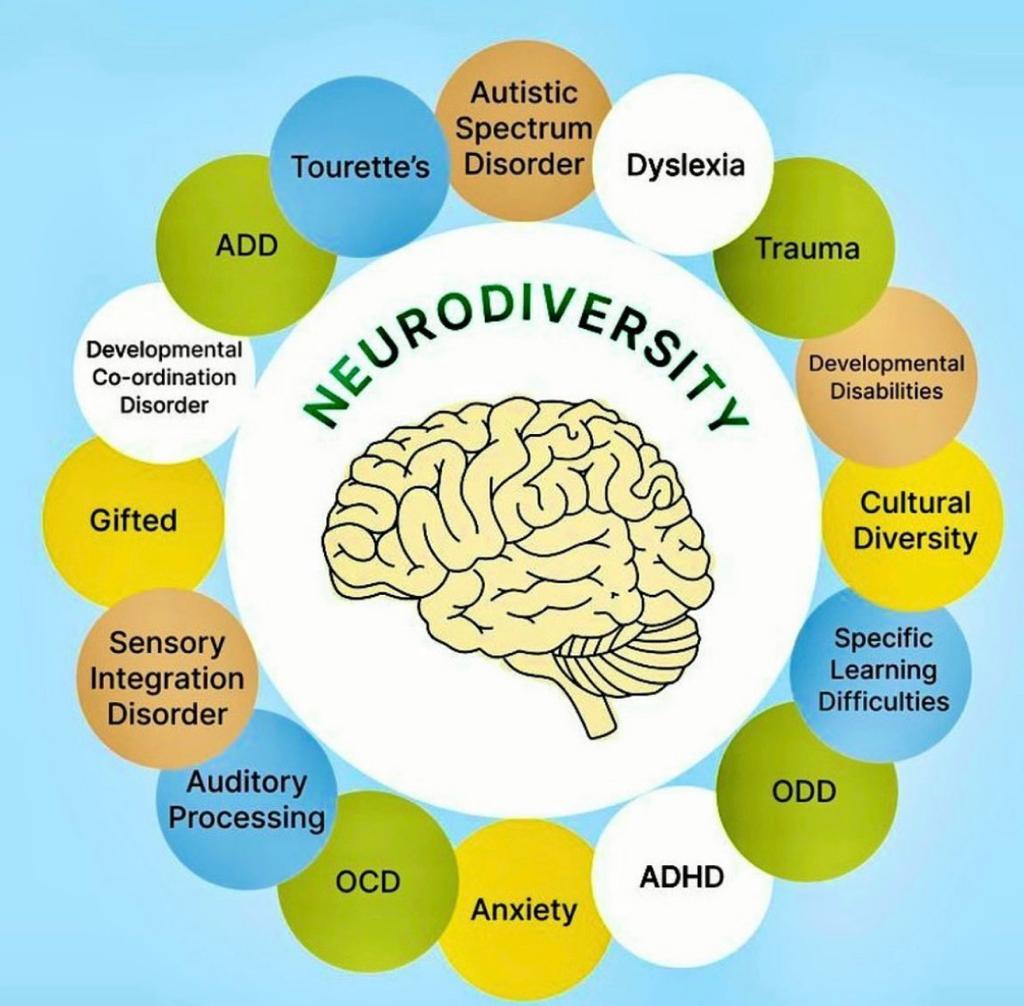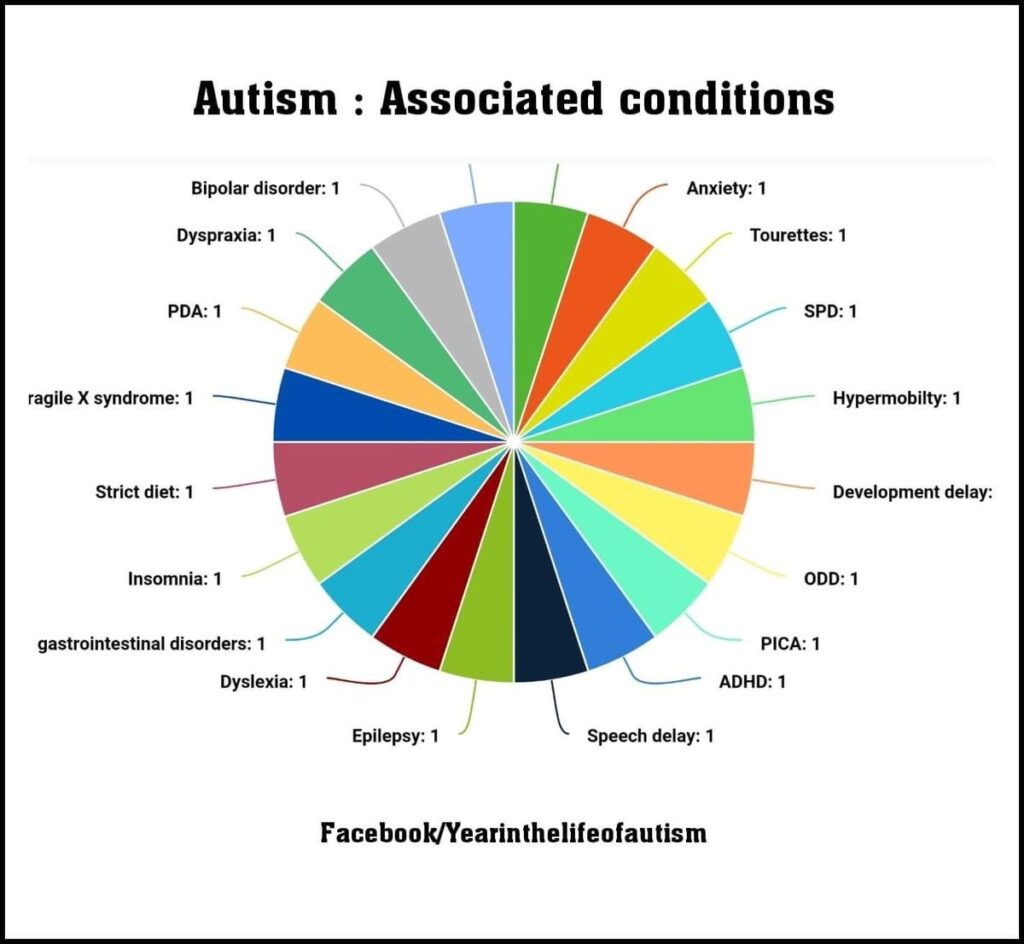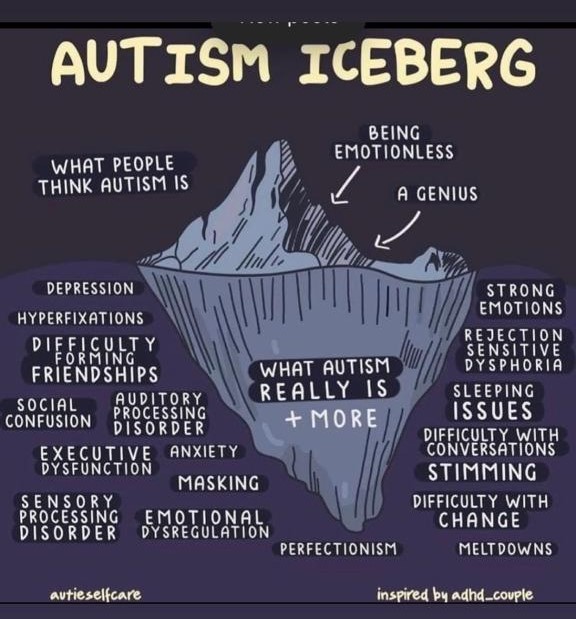info hub

Introduction
Comorbid / co-existing conditions refer to the presence of two or more medical conditions or disorders in an individual. In the context of neurodevelopmental disabilities such as autism or ADHD, comorbid conditions are common and can significantly impact a person’s overall health and well-being.
For example, individuals with autism may also experience comorbid conditions such as anxiety, depression, epilepsy, or gastrointestinal problems. Similarly, individuals with ADHD may also experience comorbid conditions such as anxiety, depression, or substance use disorders.
Comorbid conditions can make it more challenging to manage and treat the primary condition. They can also have a significant impact on a person’s quality of life and may require additional medical or therapeutic interventions.
Effective management of comorbid conditions requires a comprehensive and individualized approach that addresses each condition in a holistic manner. This may include medication management, behavioral therapies, lifestyle modifications, and other interventions. It is important for healthcare professionals and caregivers to recognize the presence of comorbid conditions and develop appropriate treatment plans to address them.
Anxiety can have both psychological and physical repercussions. Just like those who do not have ASD, individuals with autism vary in their ability to cope with anxiety. Some experts have pointed out that individuals on the spectrum, diagnosed with Asperger’s, are more likely to experience anxiety related to not “fitting in” and tend to feel overwhelmed by the world.
Similar to those who experience anxiety, individuals on the autism spectrum, in particular with AS, are more likely to experience depression. Those with Asperger’s usually feel depressed as they are more aware of their challenges and have difficulty expressing them.
This lifelong condition causes developmental and learning delays as a result of an extra copy of chromosome 21. All individuals with Down’s syndrome have some form of a learning disability, which like the autism spectrum, can range from mild to severe. Individuals with this condition are more likely to meet key developmental milestones later in life, compared to others. Some individuals may also have a dual diagnosis of both Down’s syndrome and autism.
A lifelong learning difficulty that hinders the development of literacy and language skills. Dyslexia affects how people process, store, and retrieve information and can cause issues with reading, writing, memory, speed, time perception, sequencing, and organizational skills.
Dyspraxia, also known as developmental coordination disorder (DCD), is a neurological condition that affects movement and coordination. It is a lifelong condition that usually becomes apparent in early childhood and can persist into adulthood.
People with dyspraxia may have difficulty planning and carrying out movements, such as walking, running, and jumping, as well as fine motor skills like writing and using utensils. They may also struggle with balance, spatial awareness, and organization.
In addition to motor difficulties, dyspraxia can also affect cognitive abilities such as attention, memory, and language. People with dyspraxia may also have difficulty with social interactions and may struggle with self-esteem and confidence.
There is no cure for dyspraxia, but a range of interventions and strategies can help manage symptoms and support individuals with the condition. These may include occupational therapy, physiotherapy, speech and language therapy, and assistive technology. Education and workplace accommodations, such as extra time for tasks, can also be helpful. With appropriate support, individuals with dyspraxia can achieve their goals and lead fulfilling lives.
This disorder causes recurrent seizures due to an imbalance in the brain’s chemistry. Individuals with autism are more likely to have epilepsy, and those with epilepsy, are more likely to be on the autism spectrum. Furthermore, some of the behaviors commonly associated with autism can look like the symptoms of epilepsy, including prolonged staring and repetitive movements.
This syndrome can occur when women take medication to manage epilepsy during their pregnancies. As a result, a child with Fetal anticonvulsant syndrome can have speech delays, difficulty socializing, and trouble focusing and remembering. While these symptoms are similar to autism, some children with FACS can in fact, also be autistic.
These are a group of conditions that can occur when a mother drinks alcohol during her pregnancy. These conditions can include physical problems, such as abnormal features, shorter than average height, vision or hearing problems, and it can also cause behavioral and learning disabilities, such as hyperactivity, short attention span and difficulty in school.
ome individuals on the autism spectrum have difficulty with sensory processing and are particularly sensitive to noise. While they may or may not be hearing impaired, as a result of their sensory and verbal challenges, they may have to learn sign language and rely on visual supports and reference objects in order to communicate. Sign language is also very helpful for individuals with autism, who have difficulty communicating verbally.
Hyperlexia – the opposite of dyslexia – describes an extreme fascination with letters and numbers. Children with hyperlexia have the ability to read far beyond their age level and tend to read sooner than what is typically expected of children. Even with their ability to read, individuals with hyperlexia may have difficulty comprehending the meaning of what they read. Hyperlexics, despite their literacy abilities, can experience challenges with understanding. Approximately 5 to 10 percent of children on the autism spectrum are also hyperlexic.Hyperlexia is a rare neurological condition characterized by an early and intense interest in reading, typically before the age of five. Children with hyperlexia may have advanced reading abilities, but may also have difficulty with language and social interactions.
In addition to reading at an advanced level, children with hyperlexia may also exhibit a strong memory for details, an ability to read words phonetically before they can understand their meaning, and an intense interest in letters, numbers, and symbols.
While hyperlexia is not a recognized disorder in the Diagnostic and Statistical Manual of Mental Disorders (DSM-5), it is often considered a subtype of autism spectrum disorder (ASD) or a related condition. Many children with hyperlexia also exhibit symptoms of ASD, such as difficulty with social interactions and communication.
There is no specific treatment for hyperlexia, but interventions and strategies may be recommended to support language development, social skills, and emotional regulation. These may include speech and language therapy, behavioral therapy, and social skills training. With appropriate support, children with hyperlexia can learn to manage their symptoms and achieve their full potential.
OCD stands for Obsessive-Compulsive Disorder, which is a mental health disorder characterized by repetitive and intrusive thoughts, images, or urges (obsessions) that cause distress, and repetitive behaviors or mental acts (compulsions) that are aimed at reducing anxiety or preventing harm.
Some common obsessions may include fears of contamination or germs, unwanted aggressive or sexual thoughts, or excessive concern about symmetry or orderliness. Compulsions may include repetitive behaviors such as hand washing, checking locks or appliances, or mental acts such as counting or repeating phrases silently.
OCD can significantly interfere with daily life, causing distress and impairing functioning in social, academic, and occupational domains. The exact cause of OCD is not known, but it is believed to be a result of a combination of genetic, biological, and environmental factors.
Treatment for OCD typically involves a combination of psychotherapy and medication. Cognitive-behavioral therapy (CBT) is a type of therapy that is often used to treat OCD, which involves exposure and response prevention (ERP) techniques to help individuals learn to tolerate anxiety without resorting to compulsive behaviors. Antidepressant medications, such as selective serotonin reuptake inhibitors (SSRIs), can also be effective in reducing OCD symptoms.
Selective Mutism is a childhood anxiety disorder characterized by a child’s inability to speak in certain social situations, such as school or other public places, despite being able to speak comfortably in familiar settings. This condition typically affects children under the age of five and can persist into adolescence if left untreated.
The exact cause of Selective Mutism is unknown, but it is thought to be related to anxiety, shyness, and a lack of self-confidence. Children with Selective Mutism may be able to speak and communicate effectively at home with their family members but may feel overwhelmed or anxious in social situations outside of the home.
Selective Mutism can have a significant impact on a child’s academic, social, and emotional development if left untreated. Treatment typically involves a combination of behavioral therapy, medication, and support from parents and educators. Cognitive-behavioral therapy (CBT) has been shown to be effective in treating Selective Mutism by helping children to overcome anxiety and build social skills gradually. In some cases, medication such as antidepressants or anti-anxiety medication may be used in combination with therapy.
It is important to note that Selective Mutism is a treatable condition, and early intervention can lead to better outcomes for the child. If you suspect that your child may have Selective Mutism, it is important to consult with a healthcare professional who specializes in treating childhood anxiety disorders.
This disorder involves the communication and interaction challenges of autism, without the restricted or repetitious movements, or intense interests and activities. Individuals with social communication disorder may have difficulty with verbal and non-verbal communication despite often having an average cognitive ability. As a result, they could potentially make inappropriate responses in conversations. Social communication disorder can affect relationships, academics, and even job performance for those diagnosed with the condition.
Children who are visually impaired may lose their vision from birth or in the first few months of life before an ASD can even be diagnosed. However, they can also lose their sight later in life. It can be challenging to determine just how many individuals may be affected by both autism and visual impairment. While the impact on their lives is very high, the incidence of it occurring is thought to be quite low. It is generally agreed that the impact of both a visual impairment and being on the autism spectrum, is greater than one or the other, because of the unique difficulties that will arise with every activity and interaction the affected person undertakes. In addition, those on the spectrum who are also visually impaired, cannot always partake in the necessary treatment suggested for visual impairment, which makes providing adequate support more challenging.
Tourette’s syndrome is a neurological disorder characterized by repetitive, involuntary movements and vocalizations known as tics. These tics can range from mild to severe and can include eye blinking, facial grimacing, shoulder shrugging, throat clearing, and the production of unusual sounds or words. The exact cause of Tourette’s syndrome is unknown, but it is believed to involve a combination of genetic and environmental factors. While there is no cure, treatment options such as medication, behavioral therapy, and support groups can help manage symptoms and improve the quality of life for individuals with Tourette’s syndrome.
Insomnia is a common sleep disorder characterized by difficulty falling asleep, staying asleep, or experiencing poor-quality sleep. It can be categorized as acute or chronic, with acute insomnia lasting for a few days or weeks, often triggered by stressful events, while chronic insomnia persists for at least three nights a week for three months or more. Causes of insomnia include psychological factors, physical conditions, medications, substances, irregular sleep schedules, and poor sleep habits. Treatment typically involves addressing underlying causes, implementing lifestyle modifications, and considering medical interventions such as prescription sleep aids or cognitive-behavioral therapy. Consulting a healthcare professional is recommended for proper diagnosis and personalized treatment.


